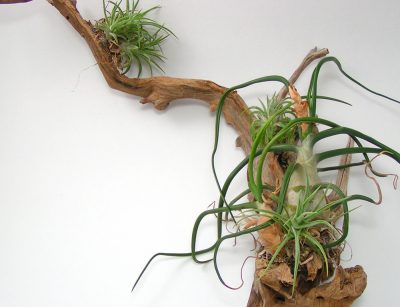
Do you how plants imbue a room with the feeling of life, and yet you don’t consider yourself the greatest gardener? For those of you who want to cultivate a few indoor plants, but have neither the time nor know-how to keep them healthy, an air plant garden might be the perfect solution.
An air plant grows without soil, reaping most of its nutrients from sunlight alone. Their roots anchor them to surfaces such as rocks and tree branches, or even rooftops and power lines! Their leaves are covered with special scales called trichomes, which absorb water and nutrients from the air. Air plants basically care for themselves, assuming you provide them with the proper environment to do so.
Setting up your air plant garden. Air plants are part of the bromeliad family of plants, and are commonly known as tillandsia. You might also hear them referred to by the nicknames “tilly” or “tills.”
Keep in mind that your home is not an air plant’s natural environment. Therefore, for your plants to thrive, you should seek to mimic their preferred habitat. The main thing you should know is that, while air plants do indeed absorb moisture from the air, your air-conditioned home is likely to be much more dry than the woodlands or rainforests where most of them grow. If you choose an air plant that originates from the desert, you could probably do with less watering.
Some growers of air plants swear by regular misting with a water bottle, but in many cases, that won’t actually provide enough moisture. A better option is to submerge your plants in a dish of water for about 12 hours. Afterward, they won’t need watering for 10 to 14 days. Avoid using hard water, if you have that problem in your home, because minerals in the water can clog the plant’s trichomes over time. On the other hand, if you use a water softening system in your house, the salts in the water can also be bad for your plants. Using distilled water might be your best option in either of these cases.
Monitor your plants for signs of stress. The day after watering, your plant is in prime condition. Make a note of its appearance, and water again when the plant’s appearance begins to deviate from that baseline. If the leaves seem flatter, curl under, or begin to turn brown, your plant is starved for moisture.
As for sunlight, place your plants near a window that receives plenty of direct light. This is the fun part! You can purchase a variety of decorative “perches” or containers for your air plants. They can be placed on end tables or windowsills, or you might enjoy a beautiful hanging glass ornament.
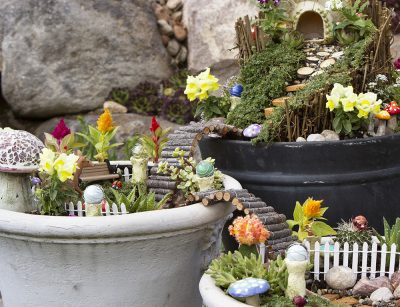
For gardeners who enjoy a touch of whimsical nostalgia, a fairy garden is the ideal project. If you have kids, they might also get in on the fun. You might even find yourselves watching the garden on balmy summer nights, hoping to get a glimpse of a magical little visitor. It’s all make-believe, of course, but the kids don’t have to know that!
Fairy gardens have enjoyed a surge of popularity in recent years, with some gardeners even organizing exhibitions and friendly competitions. The hobby combines a love of gardening with a sense of childlike wonder, while adding a unique touch to your patio, porch, or sunroom.
First of all, check out our Pinterest page to see exactly what we’re talking about here. Now that you’re squealing in excitement (we know you are), let’s discuss how you can put together your very own fairy garden.
There are many kits available on the market, or you can just start with a flower pot, large bowl, or hanging planter. Basically, if you can use a container to plant flowers, then you can use it as a fairy garden.
Next, take measurements of your container, and sketch out your ideas for a layout. You might want to include a miniature house for your fairies, a windmill, a teeny bridge, toadstools, or a number of other adorable structures. Pave a little path with pebbles, or cultivate moss to represent a grassy lawn. This is where our Pinterest page will come in handy to give you ideas.
As for plants, choose those that are known for growing well indoors. And, of course, consider the dimensions of your container, since you don’t want to plant something that will outgrow its environment. Succulents and small flowers make excellent choices.
If you’re keeping your fairy garden indoors, place it near a window for adequate light. Or, select a sunny spot on your patio or porch. Select the location based upon the plants you’ve chosen, as some need more light than others. Watering will also depend upon your plants’ needs.
The best thing about fairy gardens is that you’re only limited by your imagination! You can build it as large and complex as you want, and you can change up it by adding new elements periodically. You will enjoy the beauty a fairy garden adds to your surroundings, and you might even find yourself immersed in a captivating new hobby.
One of the greatest things about living in Southern California is the amount of time we get to spend outdoors! With mild seasons and a sunny climate, most of us could be spending some time outside almost every day. We know, of course, it’s even more fun when you can bring a few comforts of home with you… so follow these tips when designing your outdoor space, and select the furniture that is right for you.
Consider function. How do you plan to use the space? Will you host gatherings, or use it as a private reading nook? Will you be serving food, or just having drinks and chatting? These questions will help you decide how many people you want to seat, and which type of tables (dining, coffee, or end tables) are appropriate.
Choose forgiving materials. Obviously, any furniture placed outside will be exposed to the elements. We don’t get much rain in this area, but we do get plenty of sunshine, which can also fade or degrade many materials. Choose furniture made of metal, teak, cedar, wicker, or other all-weather materials. Keep in mind that price often reflects quality: that inexpensive set might look great for a year or two, but will need to be replaced before too long.
Think about storage. Are there any items you want to keep outside with your patio set, such as serving pieces or extra pillows? Consider an extra piece of furniture that doubles as storage, such as an outdoor chest or ottomans with removable tops and roomy interiors.
Match your home’s exterior. If you have already invested in a certain color scheme for the exterior of your house, it makes sense to choose furniture that complements it. Of course, you don’t have to match everything exactly; think about complementary colors too! For example, green cushions might perfectly accent the red trim on your house, turquoise would pop when used on an orange-hued patio, and so on.
Remember to add shade. You will enjoy your patio set considerably less if you feel as though you’re baking in an oven! Whether you choose a dining table or a living-room type set, make sure to add an umbrella unless your furniture will be placed on a covered patio.
Add an all-weather rug. Most people don’t think of floor coverings when purchasing outdoor furniture, but an all-weather rug can tie together the space. They make nice visual accents, and your space will feel even more inviting.
Try it out. As with any other furniture, you want to select something that is comfortable. So, as you shop, take the time to relax a few minutes, put your feet up, and imagine this furniture on your patio or deck.
For more information about designing your outdoor space, give us a call. We can help you create the patio or deck of your dreams, and give advice about outdoor furniture and more.
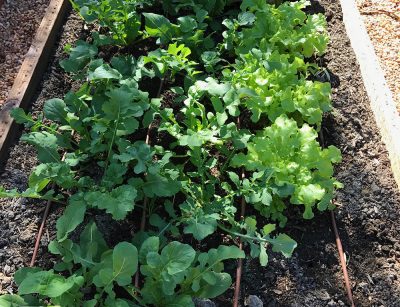
Have you made a salad lately? Most likely, you pulled a container of week-old greens from your refrigerator, added a few more vegetables, some dressing, and perhaps nuts or cheese. A salad can be a healthy, well-balanced, and delicious meal. But many people say they feel bored with salads, that it’s difficult to keep greens fresh for more than a few days, that the taste is bland, or that they worry about pesticide residue. All of these issues are valid concerns, and all of them can be addressed in one simple way: Grow your own lettuce in your backyard garden!
When you purchase lettuce at the grocery store, it was probably harvested days or even a week ago. Since then, it has been refrigerated, transported on a truck, and stored on a brightly-lit grocery store shelf. Your lettuce has lost flavor, the nutrients have begun to break down, and it won’t last long after you bring it home. Healthy eating might be a top priority for you, but it can be a difficult goal to accomplish when you rely upon store-bought veggies.
Imagine walking into your backyard garden instead, and selecting your lettuce straight from the ground (or, even better, a raised garden box). You have control over pesticide use, the lettuce is still warm and tasty when you bring it inside, and best of all… it’s so fresh and nutritious!
Lettuce is quite easy to grow, and some varieties even make a decorative addition to flower beds. Just follow these simple steps:
• Enrich your soil with organic fertilizer, and break up clumps with a rake
• Sow seeds directly into the ground, about half an inch deep, or transplant small plants
• Space your plants according to the type of lettuce you’re growing: 7 to 15 inches apart for larger lettuces, or packed closely together for smaller varieties
• Sow new seeds (or plants) every week or two, to ensure a steady supply of fresh lettuce throughout the growing season
• Water regularly (of course), keeping the soil damp (but not soaked)
Unlike many other vegetable crops, lettuce is quite hardy in cool weather. In fact, seeds germinate poorly in very hot weather, and your plants are more likely to “bolt” in the summer (shoot upwards and focus energy on seed production rather than producing the foliage you want to eat). For these reasons, lettuce is better grown in cool weather. So come on out to our nursery, and check out the different varieties of lettuce we carry. We’ll be happy to assist you in selecting the plants that are right for your garden project.
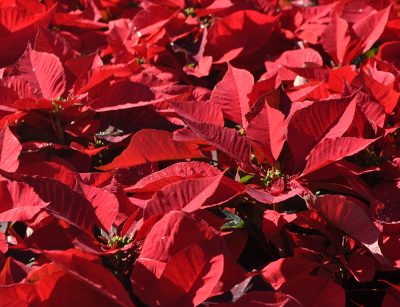
The holidays are approaching, and with them come decorations galore! You’ve probably been seeing holiday décor in stores for weeks now, and poinsettia plants are on sale everywhere.
Poinsettias are popular at this time of year, because their brightly colored red (or sometimes white) leaves provide a splash of festive color during the winter. The plants are indigenous to Mexico, and grow well in our climate, so you can transplant your poinsettias outside when the holiday season is over. Read more

Natural and herbal treatments are rapidly growing in popularity, and you might be spending a good deal of time in the tea aisle of your supermarket. But have you ever considered growing your own teas? In doing so, you could ensure that your plants are organically grown, and you would can create personalized blends based on your needs and preferences. In addition, many tea growers report that their homegrown teas pack a much more robust flavor than the varieties commonly found in the grocery store (probably due to the freshness). Read more
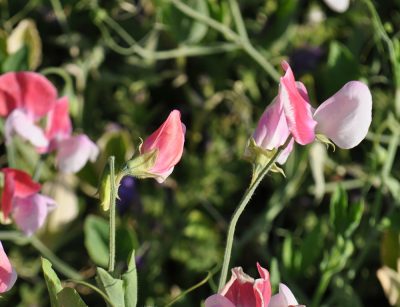
The best things in life often require planning, and our spring gardens are certainly no exception to that rule. Yes, fall has just begun, and you’re probably thinking more about the holidays than next year’s gardening projects! But if you get a head start now, then next year you could have the most well-planned, diverse, and vibrantly blooming yard on the block.
If a proliferation of delicate, frilly blooms on a climbing vine sounds appealing, then sweet peas might be right up your alley. They’re not actually a pea at all, and the annual flowers give off a fragrant scent reminiscent of honey and orange blossoms. Sweet pea vines are relatively easy to grow, provided you get started with them early. Read more
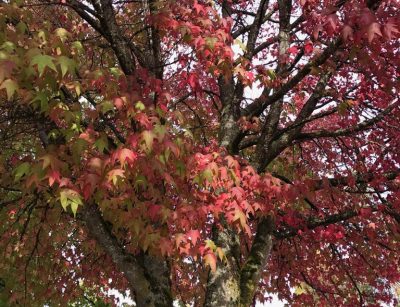
We all know that fall has arrived when coffee shops start advertising their pumpkin spice drinks! Whether or not you enjoy pumpkin treats, chances are good that you love fall foliage. There’s just something about red and gold leaves that put us in the mood for the holidays to come.
But of course, here in Southern California, we have to put in a bit more work to cultivate that “fall feeling”. Try the following landscaping and decorating ideas to add autumn color to your yard. Read more
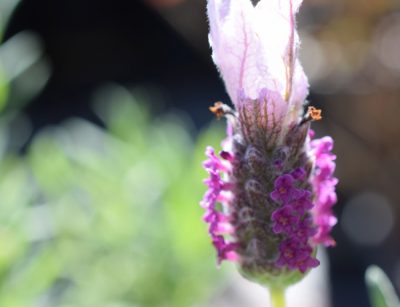
Lavender is known for its lovely scent, but it carries many medicinal properties as well. In recent years, the herb has enjoyed a resurgence in popularity due to growing concern about toxic chemicals in the home. It can also be used medicinally, instead of over-the-counter remedies. Read more
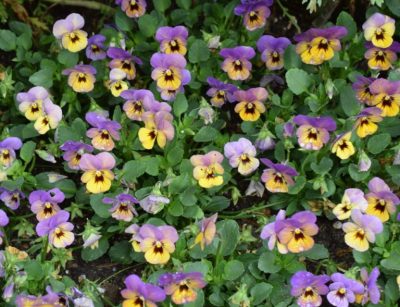
As summer comes to an end, many of your flowering plants are blooming for the last time this season. While they won’t be adorning your yard anymore (at least this year), you can still put those beautiful blooms to good use. Pressed flowers can be used to decorate your home, in frames or shadowboxes, and can also be used in craft projects such as scrapbooking. Here is what you need to know about pressing your own flowers. Read more
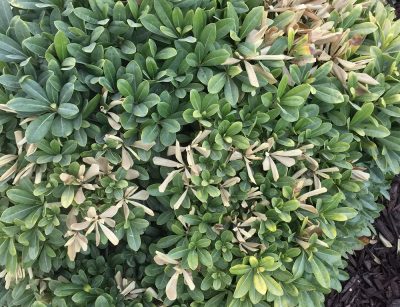
We hope you’re enjoying summer and a terrific growing season. Of course, each summer as the temperature peaks, some plants do experience heat stress. As with most things in life, prevention is the best “medicine” … But since high temps can sneak up and stress plants before you realize what’s happening, be on the lookout for these signs of stress in your plants. Then take the following measures to repair the damage. Read more
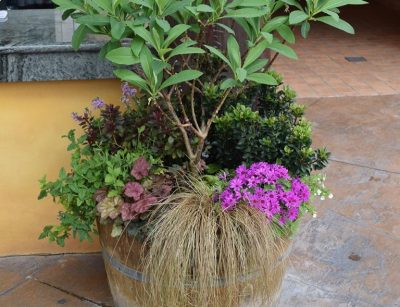
Now that summer vacation is coming to an end, most kids are headed back to school. Many parents enjoy giving “back to school” presents to their kids’ teachers, such as a wall decoration, something special for the teacher’s desk, or an attractive potted plant to add cheer to the classroom.
We, of course, highly recommend a potted plant! It’s the gift that keeps on giving all year, and if you select a hardy plant, teachers can even take them home and continue to enjoy them when the school year is over. Read more
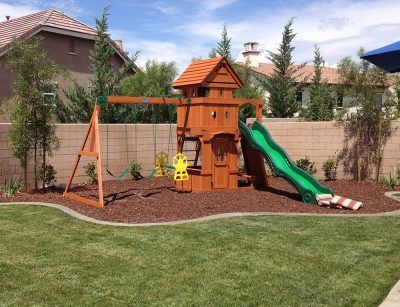
One of the questions we get asked most often is how we can create a family friendly yard. At McCabe’s Landscape, most of us are parents (and some grandparents as well), so we think of family first. We created this blog with some helpful information so that you can make sure that your family is happy and safe in your yard.
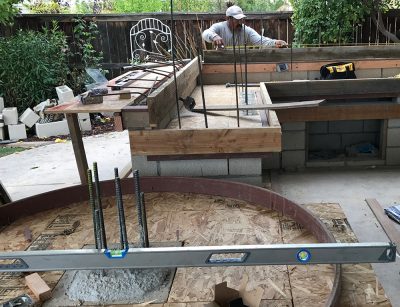
Summer is prime time for pool parties and barbecues. If you’ve been to a cookout recently, you might now be dreaming of your own outdoor kitchen. As always, before you get started with a new project, you should consider all of your possibilities. Analyzing your priorities and making a comprehensive plan ahead of time can save you time and money on your in the long run. Read more
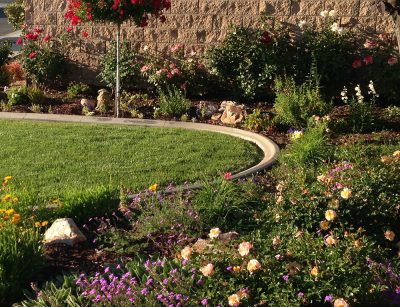
Not all gardening services offer the same products, services, or quality. Please take a look at this video to see what makes the McCabe’s Maintenance Team more than a little different!
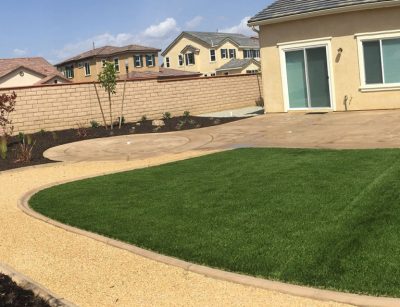
Everyone loves the look of a lush, green lawn. Between high water bills, the cost of maintaining your grass, and ongoing applications of fertilizer, not to mention aeration, a good looking lawn can remain costly. In addition to the expense, the frustration of dealing with problems like bare spots, viruses, and seasonal changes in color and quality, many homeowners are rethinking the typical grass lawn. Some have opted for low-water xeriscaping, while others are considering artificial turf. After all, you can achieve the same type of curb appeal with artificial turf, but you never have to water or cut it! Read more
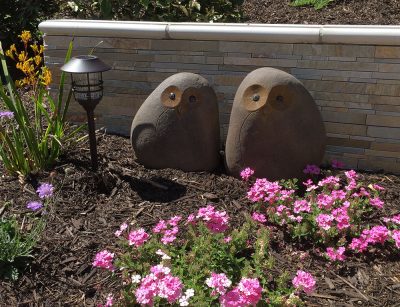
Bridges, benches, statues, oh my! Decorating and accenting landscapes is an important final step in the landscaping process. Well placed decorations can make the finished product “just right” and exactly yours. Take a look at this video for some tips and tricks!
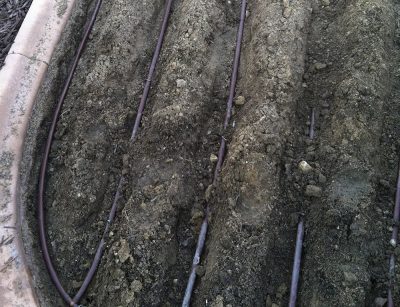
With California’s continuing drought, there have been a lot of questions about what kind of irrigation systems work well in our climate. This video blog contains helpful information about how to have a lush landscape while using as little water as possible.
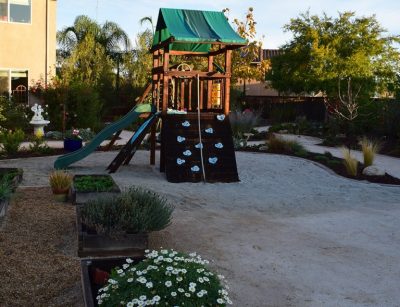
School is out for the summer, and your kids are probably spending a lot more time at home. And unless you intend to raise professional video gamers, you probably encourage them to spend some time outdoors each day. However, that means you have to take extra measures to keep them safe. If you’ve installed a backyard swing set, it’s important to pay attention not only to safety instructions for the swing set itself, but also, to the surrounding landscaping. Read more
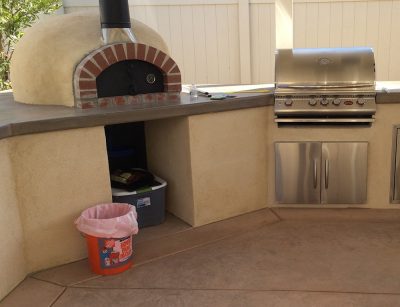
Outdoor living is one of the best parts of having a home in Southern California. Check out this video on creating an entertainment space for your home!
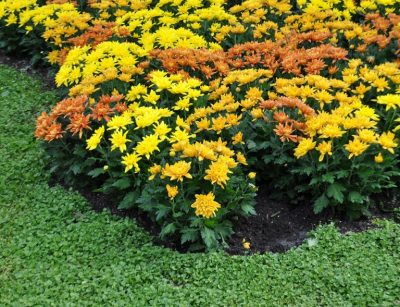
Everyone loves a garden full of vibrant, beautiful blooms. But, of course, gardening can require quite a bit of know-how – not to mention hard work! If you’re wondering whether you should choose annuals or perennials for your garden, keep reading for a breakdown of their basic characteristics. Then you can choose the varieties of flowers that best suit your needs. Read more
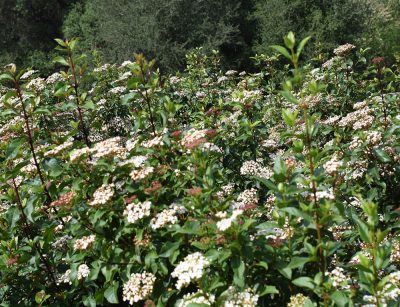
Your neighbors are terrific people, but sometimes they can be a bit loud. Or perhaps you just don’t want to see Mr. Jones sunbathing in his Speedo! Whatever the reason, it’s understandable to want privacy in your own backyard. We have several ways to help you accomplish that, and you can add an attractive landscaping feature to your property while doing so. Read more
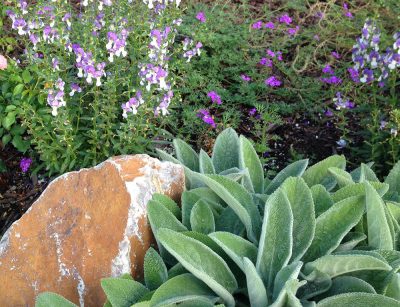
Designing the right landscape isn’t always easy. There are a lot of physical and environmental factors to consider. Equally as important is the family involved and how you intend to use the space. Check out this video to ensure the yard you build is based on a design that will work for you and your family for years to come!
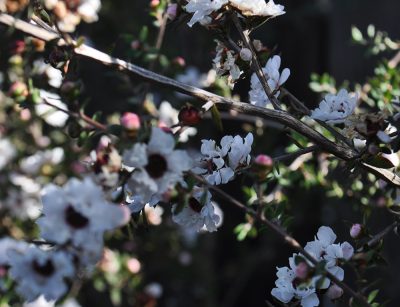
Agriculture took root about 12,000 years ago, and changed the way we live forever. In general, we tend to see these changes as a good thing, but recently many people have become concerned about the level of chemical pesticides and other potentially harmful substances used by the agriculture industry. Yes, these things allow us to produce mass quantities of food for our growing population, but do they come at a price? Read more
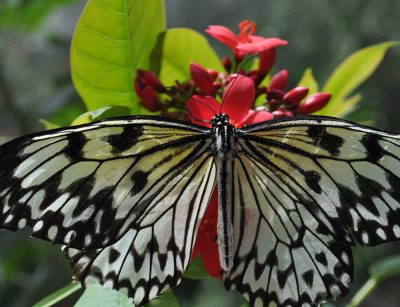
Attracting butterflies to your garden can be a great way to engage with nature. Sometimes they happen by for a visit, but providing them with food, water, or a place to rest can mean that they will stay longer. Check out this video to learn a bit more about how to create a butterfly garden of your very own!
